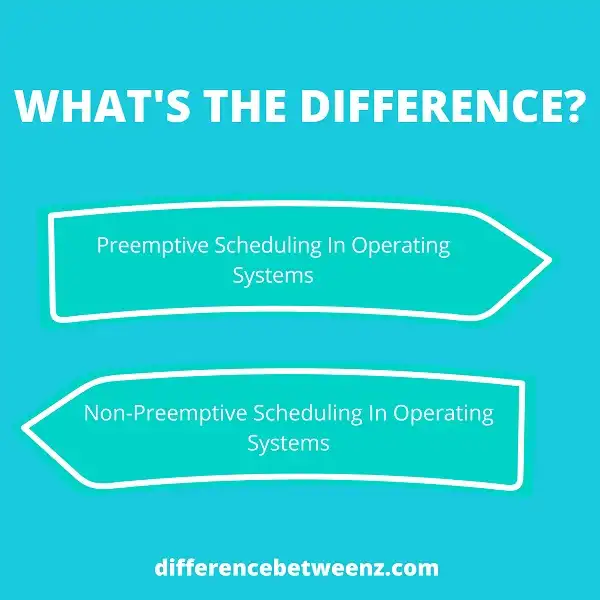Computer operating systems use two different types of scheduling algorithms to determine which processes should be executed next: preemptive and non-preemptive. In a preemptive system, the operating system can interrupt a running process and give control to another process, even if that process is not ready to run. In a non-preemptive system, the operating system will only give control to a process that is ready to run. This article will discuss the differences between these two types of scheduling algorithms.
What is Preemptive Scheduling In Operating Systems?
- Preemptive In Operating Systems is a process where the operating system kernel interrupts the running process to run another process. The interrupted process is then placed back in the ready queue.
- Preemptive scheduling is used in most of operating systems like Windows, Linux, and macOS. Non-preemptive scheduling is used in some real-time operating systems where processes with higher priority must finish before other processes are allowed to start.
- Preemptive scheduling is used because it allows the operating system to quickly respond to events without waiting for the currently running process to finish. Preemptive scheduling also prevents one process from hogging the CPU and starving other processes.
What is Non-Preemptive Scheduling In Operating Systems?
Non-Preemptive In Operating Systems is where an executing process cannot be interrupted by any other process, even if the interrupting process has a higher priority than the one that is currently being executed.
- Non-preemptive scheduling is generally used in real-time systems where deadlines must be met. The advantage of non-preemptive scheduling is that it is easier to implement and understand than preemptive scheduling.
- The disadvantage is that, if a process with a high priority arrives while another long process is running, the long process may have to wait a long time before it can finish.
- Another type of Non-Preemptive In Operating Systems is cooperative multitasking, where processes must explicitly yield control periodically, or when they are waiting for some event to occur.
This type of Non-Preemptive In Operating System can result in poor performance if a process does not yield control often enough. It can also be less reliable because a single process can bring down the whole system if it fails to yield control.
Difference between Preemptive and Non-Preemptive Scheduling In Operating Systems
- Preemptive and non-preemptive scheduling algorithms are used in modern operating systems to schedule processes. Preemptive scheduling algorithms allow the scheduler to stop a running process and resume it later, while non-preemptive algorithms do not allow preemption.
- Preemptive scheduling is more efficient because it allows the scheduler to better utilize the resources of the system. However, non-preemptive scheduling is fairer because each process gets a fair share of CPU time.
- When deciding which type of scheduler to use, architects must take into account the needs of their particular system. In general, systems that require high throughput or real-time responses will benefit from preemptive scheduling, while systems that place a higher priority on fairness may be better suited to non-preemptive scheduling. Ultimately, the choice of scheduler depends on the specific requirements of the system.
Conclusion
Operating systems use preemptive and non-preemptive scheduling algorithms to manage processes. Processes in a preemptive system are assigned a priority, and the operating system can interrupt a process with a higher priority to run its code. In contrast, non-preemptive systems allow lower-priority processes to continue running even when higher-priority processes become ready to run.
The choice of scheduling algorithm affects the responsiveness of the operating system and the overall throughput of the system. We’ve seen that preemptive scheduling offers better response time but at the cost of reduced throughput, while non-preemptive scheduling achieves increased throughput at the expense of worse response time.


